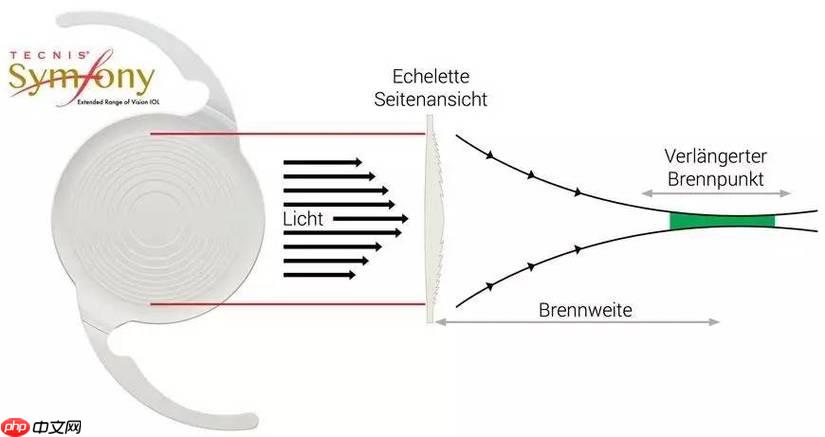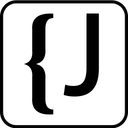
在Symfony里,要把JSON字符串转换成对象,最直接、也最推荐的做法是利用其自带的序列化器(Serializer)组件。它不仅仅是简单地解析JSON,更重要的是能帮你把JSON数据映射到你定义的PHP对象上,并且能处理更复杂的类型转换和数据验证。
通常,我们会通过注入
Symfony\Component\Serializer\SerializerInterface
deserialize
<?php
namespace App\Controller;
use Symfony\Bundle\FrameworkBundle\Controller\AbstractController;
use Symfony\Component\HttpFoundation\Request;
use Symfony\Component\HttpFoundation\JsonResponse;
use Symfony\Component\Routing\Annotation\Route;
use Symfony\Component\Serializer\SerializerInterface;
use App\Dto\MyDataDto; // 假设你有一个这样的DTO类
class MyApiController extends AbstractController
{
#[Route('/api/process-json', methods: ['POST'])]
public function processJson(Request $request, SerializerInterface $serializer): JsonResponse
{
// 获取请求体中的原始JSON字符串
$jsonContent = $request->getContent();
try {
// 将JSON字符串反序列化为MyDataDto对象
// 第一个参数是JSON字符串
// 第二个参数是目标对象的完全限定类名
// 第三个参数是数据的格式,这里是'json'
$myData = $serializer->deserialize($jsonContent, MyDataDto::class, 'json');
// 此时,$myData 就是一个 MyDataDto 的实例,你可以像操作普通PHP对象一样操作它了
// 比如:$myData->getName(), $myData->getEmail()
// 进一步处理业务逻辑...
// return new JsonResponse(['message' => '数据处理成功', 'received_name' => $myData->getName()]);
return $this->json(['message' => '数据处理成功', 'received_name' => $myData->getName()]);
} catch (\Exception $e) {
// 处理反序列化过程中可能出现的错误,比如JSON格式不正确
return new JsonResponse(['error' => '数据解析失败: ' . $e->getMessage()], JsonResponse::HTTP_BAD_REQUEST);
}
}
}
// 示例 MyDataDto 类
// namespace App\Dto;
//
// class MyDataDto
// {
// private string $name;
// private string $email;
// private ?int $age = null;
//
// public function getName(): string { return $this->name; }
// public function setName(string $name): void { $this->name = $name; }
//
// public function getEmail(): string { return $this->email; }
// public function setEmail(string $email): void { $this->email = $email; }
//
// public function getAge(): ?int { return $this->age; }
// public function setAge(?int $age): void { $this->age = $age; }
// }json_decode
这是一个很常见的问题,尤其对于刚接触Symfony序列化组件的朋友。当然,PHP内置的
json_decode
stdClass
想象一下,如果你只是用
json_decode($jsonString, true)
json_decode
序列化器组件则提供了一个更高级、更声明式的解决方案。它通过配置(或注解、属性)就能知道如何将JSON字段映射到PHP对象的属性上,甚至能自动处理复杂类型(比如日期、嵌套对象)。它还能与验证器组件无缝集成,在你反序列化完成后立即对数据进行验证,大大减少了手动检查的负担,也让你的代码更干净、更易于维护。对于一个追求高效率和可扩展性的项目来说,这绝对是值得投入的。
在Symfony控制器中处理JSON请求体,最优雅的方式就是充分利用依赖注入和序列化器组件。刚才的解决方案已经展示了核心思路,但我们可以再深入一点,考虑一些实际场景。
一个常见的模式是,为每个需要接收JSON数据的API端点定义一个专门的数据传输对象(DTO,Data Transfer Object)。这个DTO只包含你希望从JSON中接收的字段,并且可以加上验证约束(通过
symfony/validator
<?php
// src/Dto/CreateProductRequest.php
namespace App\Dto;
use Symfony\Component\Validator\Constraints as Assert;
class CreateProductRequest
{
#[Assert\NotBlank(message: "产品名称不能为空。")]
#[Assert\Length(min: 3, max: 255, minMessage: "名称至少需要3个字符。", maxMessage: "名称不能超过255个字符。")]
public string $name;
#[Assert\NotNull(message: "价格不能为空。")]
#[Assert\PositiveOrZero(message: "价格必须是非负数。")]
public float $price;
#[Assert\Type('string', message: "描述必须是字符串。")]
public ?string $description = null;
}然后在控制器里:
<?php
namespace App\Controller;
use Symfony\Bundle\FrameworkBundle\Controller\AbstractController;
use Symfony\Component\HttpFoundation\Request;
use Symfony\Component\HttpFoundation\JsonResponse;
use Symfony\Component\Routing\Annotation\Route;
use Symfony\Component\Serializer\SerializerInterface;
use Symfony\Component\Validator\Validator\ValidatorInterface;
use App\Dto\CreateProductRequest; // 导入我们的DTO
class ProductController extends AbstractController
{
#[Route('/api/products', methods: ['POST'])]
public function createProduct(
Request $request,
SerializerInterface $serializer,
ValidatorInterface $validator // 注入验证器
): JsonResponse {
$jsonContent = $request->getContent();
try {
// 反序列化JSON到DTO对象
$productRequest = $serializer->deserialize($jsonContent, CreateProductRequest::class, 'json');
// 对DTO对象进行验证
$errors = $validator->validate($productRequest);
if (count($errors) > 0) {
$errorMessages = [];
foreach ($errors as $error) {
$errorMessages[] = $error->getPropertyPath() . ': ' . $error->getMessage();
}
return new JsonResponse(['errors' => $errorMessages], JsonResponse::HTTP_BAD_REQUEST);
}
// 如果验证通过,现在你可以安全地使用 $productRequest 对象了
// 比如,把它持久化到数据库
// $product = new Product();
// $product->setName($productRequest->name);
// $product->setPrice($productRequest->price);
// $product->setDescription($productRequest->description);
// $entityManager->persist($product);
// $entityManager->flush();
return $this->json(['message' => '产品创建成功', 'product_name' => $productRequest->name], JsonResponse::HTTP_CREATED);
} catch (\Exception $e) {
return new JsonResponse(['error' => '请求数据格式不正确或内部错误: ' . $e->getMessage()], JsonResponse::HTTP_BAD_REQUEST);
}
}
}这种模式让你的控制器保持精简,专注于业务逻辑,而数据解析和验证的复杂性则被封装在DTO和验证器中。它让API接口的定义更加清晰,也提升了代码的可读性和可维护性。
当JSON数据结构变得复杂,包含嵌套对象、数组或者日期时间等特殊类型时,Symfony的序列化器依然能很好地应对,但可能需要你做一些额外的配置或理解其工作原理。

Easily find JSON paths within JSON objects using our intuitive Json Path Finder
 30
30

首先,对于嵌套对象,序列化器是开箱即用的。只要你的PHP DTO或实体类中对应的属性也是一个对象类型(并且这个对象类型本身也有对应的setter方法),序列化器就会自动尝试递归地反序列化。
// src/Dto/OrderRequest.php
namespace App\Dto;
class OrderRequest
{
public string $orderId;
public CustomerDto $customer; // 嵌套对象
/** @var ItemDto[] */
public array $items; // 嵌套对象数组
}
// src/Dto/CustomerDto.php
namespace App\Dto;
class CustomerDto
{
public string $name;
public string $email;
}
// src/Dto/ItemDto.php
namespace App\Dto;
class ItemDto
{
public string $productId;
public int $quantity;
}如果你的JSON是这样的:
{
"orderId": "ORD-123",
"customer": {
"name": "John Doe",
"email": "john@example.com"
},
"items": [
{"productId": "P001", "quantity": 2},
{"productId": "P002", "quantity": 1}
]
}序列化器会自动将
customer
CustomerDto
items
ItemDto
其次,对于日期时间字段,如果JSON中是ISO 8601格式(如
"2023-10-27T10:00:00+00:00"
DateTime
DateTimeImmutable
NormalizerInterface
DenormalizerInterface
DateTime
// src/Serializer/Denormalizer/TimestampDenormalizer.php
namespace App\Serializer\Denormalizer;
use DateTimeImmutable;
use Symfony\Component\Serializer\Normalizer\DenormalizerInterface;
class TimestampDenormalizer implements DenormalizerInterface
{
public function denormalize(mixed $data, string $type, string $format = null, array $context = []): DateTimeImmutable
{
return DateTimeImmutable::createFromFormat('U', (string) $data); // 'U' for Unix timestamp
}
public function supportsDenormalization(mixed $data, string $type, string $format = null, array $context = []): bool
{
return $type === DateTimeImmutable::class && is_numeric($data) && $format === 'json';
}
}然后确保这个服务被Symfony的序列化器发现(通常只要在
services.yaml
serializer.normalizer
最后,利用序列化组(Serialization Groups)也是一个非常强大的技巧。当你同一个对象需要以不同方式进行序列化或反序列化时(比如管理员看到所有字段,普通用户只能看到部分字段),你可以使用
#[Groups(['group_name'])]
deserialize
context
// src/Dto/UserDto.php
namespace App\Dto;
use Symfony\Component\Serializer\Annotation\Groups;
class UserDto
{
#[Groups(['read:user', 'read:admin'])]
public int $id;
#[Groups(['read:user', 'read:admin', 'write:user'])]
public string $name;
#[Groups(['read:admin', 'write:admin'])]
public string $email; // 只有管理员能看到或写入
#[Groups(['read:admin'])]
public \DateTimeImmutable $createdAt;
}在控制器中反序列化时:
// 对于普通用户写入,只允许修改name $user = $serializer->deserialize($jsonContent, UserDto::class, 'json', ['groups' => ['write:user']]); // 对于管理员写入,允许修改name和email $adminUser = $serializer->deserialize($jsonContent, UserDto::class, 'json', ['groups' => ['write:admin']]);
这些技巧的组合使用,能够让Symfony在处理各种复杂JSON到PHP对象的转换时,保持高度的灵活性和可维护性。
以上就是Symfony 怎样把JSON字符串转为对象的详细内容,更多请关注php中文网其它相关文章!

每个人都需要一台速度更快、更稳定的 PC。随着时间的推移,垃圾文件、旧注册表数据和不必要的后台进程会占用资源并降低性能。幸运的是,许多工具可以让 Windows 保持平稳运行。

Copyright 2014-2025 https://www.php.cn/ All Rights Reserved | php.cn | 湘ICP备2023035733号